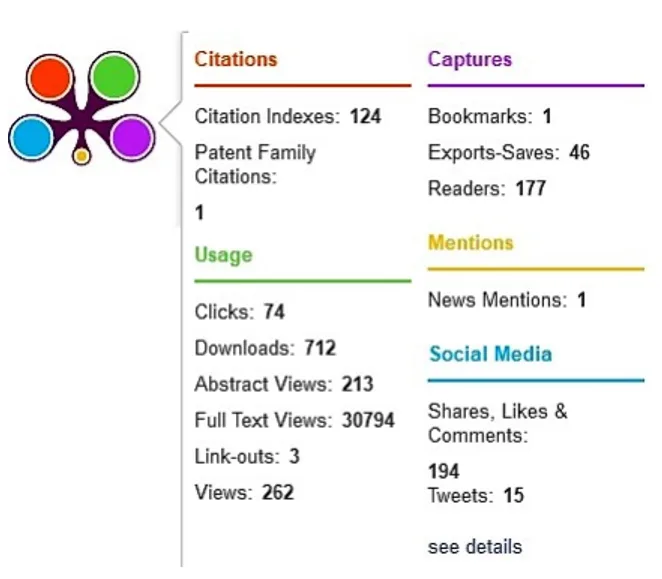Track your impact
Knowing and demonstrating your research's influence is invaluable when applying for funding, seeking a new position or working toward promotion. Promoting your research influence helps you get discovered and get noticed.
Measuring an article's impact
Determining the impact of published research is crucial for the betterment of society and also for funding and promotional opportunities.
Article-level metrics (ALMs) quantify the reach and influence of published research. ALMs seek to incorporate data from new sources, such as social media mentions, along with traditional measures (including citations) to present a richer picture of how an individual article is being discussed, shared and used. Measuring and reporting societal impact is an increasingly important aspect of getting funding and inspiring public confidence in research.
Four Scopus-specific metrics can be found on a document’s metrics details page: total number of citations by date range, citations per year for a range, citation benchmarking (percentile) and Field-weighted Citation Impact (FWCI). "Views count" is also available so you can understand usage at a glance.
PlumX Metrics
PlumX Metrics provide insights into the ways people interact with individual pieces of research, such as articles, conference proceedings, book chapters and more, in the online environment. These metrics are incorporated into Elsevier’s world-leading research products: Scopus, ScienceDirect and SSRN, as well as Elsevier’s leading journal and society partner sites.
We categorize metrics into five separate categories: citations, usage, captures, mentions and social media. Many journal homepages display the top 10 most popular articles according to PlumX social media metrics. More than 50 sources are included in PlumX Metrics.

Author metrics & profile
Get free metrics about an article, the number of citations and your h-index via Scopus Preview. Registered Scopus users also benefit from additional metrics about preprints, co-authors, topics and awarded grants as well as being able to see their own h-graph and citation tracker.
Discover the true impact of your research. Follow our easy-to-use, three-step Author Profile Wizard and update and verify your profile to ensure that your research and accomplishments are captured and displayed correctly in Scopus.
Journal-level metrics
Knowing where to publish your research is an important consideration. CiteScore metrics, SCImago Journal Rank (SJR), Source-Normalized Impact per Paper (SNIP) and Journal Impact Factor are among the tools offered to help you assess the journals in your field.
Watch our short videos about research metrics
Metrics have become a fact of life in most fields of research and scholarship. They are used to evaluate the quality of a journal, as well as to determine the influence of your research in your field.
In this series of free modules, we walk you through some of the key players in metrics.